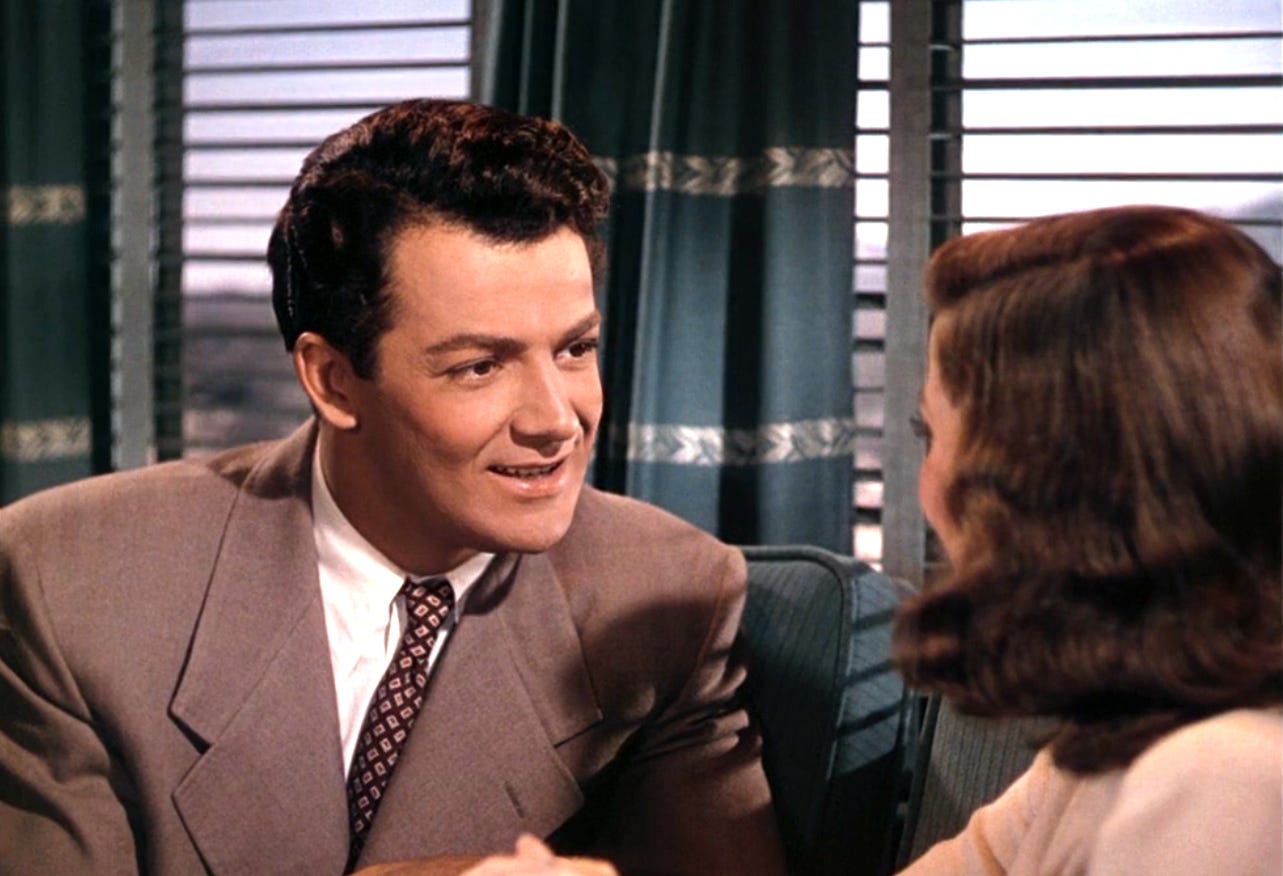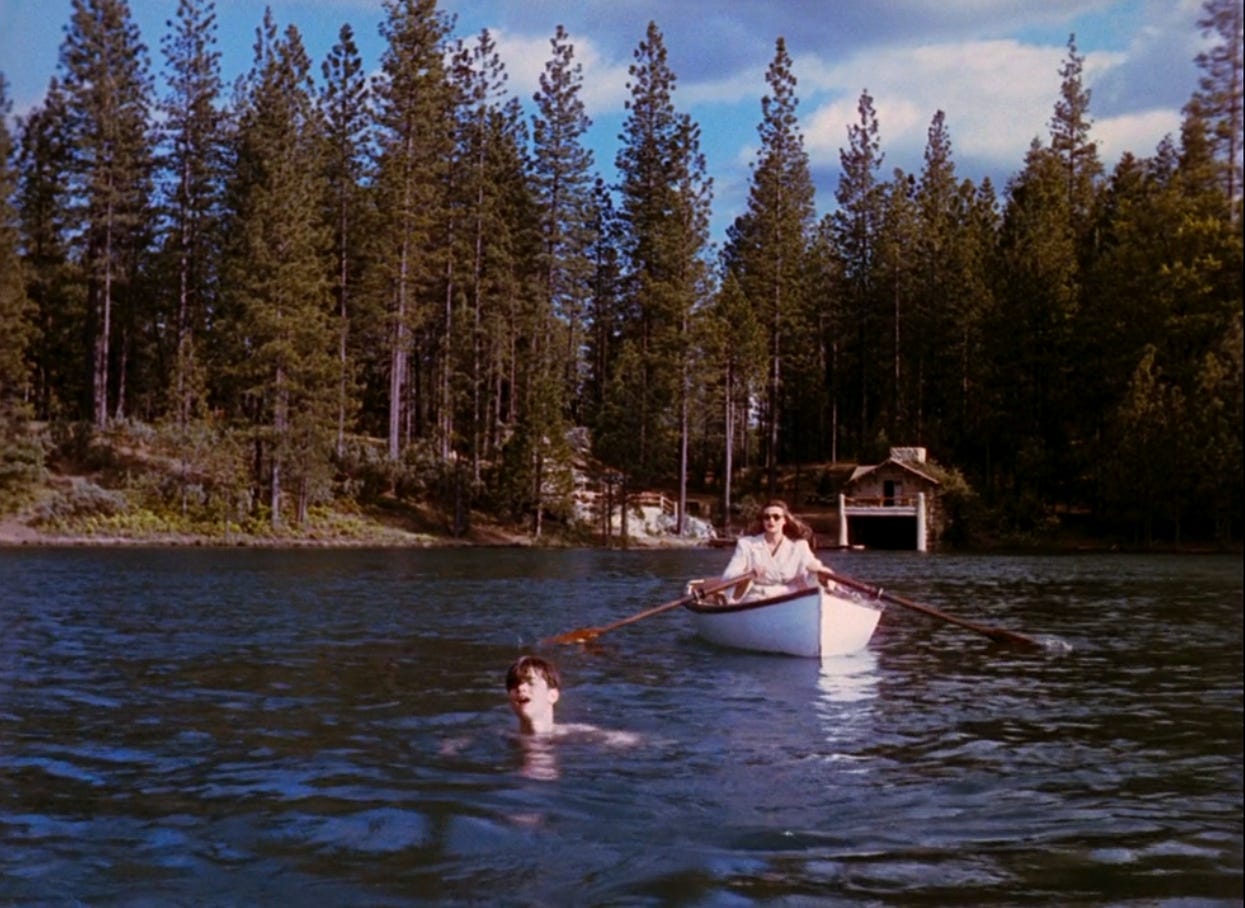Nobody, not even the Evil Queen in Snow White — strongly outlined and fully committed to the Dark Arts as she is — sees themselves as the villain. Rather every act of cruelty, every prideful sneer, every impossible demand is, in their mind, balanced.
For they are always the victim. And indeed they are, of self-delusion. And because of that, every threat is an existential one. Every crisis, an opportunity to rip back the curtain, force them to confront a mirror that is not under a spell. Snow White, they must be told, is fairer, younger, more loved. This foolish twittering child, singing into wells to hear her own echo — it is she, not they, who is the sweet lovely thing in this story.
But that’s Disney.
In the movies we love, especially ones where the star is mature and full of histrionic tics and quirks, we get the story from the Evil Queen’s point of view. From the spin machine overheating inside the royal chambers.
Sunset Boulevard, for instance. All About Eve too.
Both are monster tales told with sympathy for the devils. Both Norma and Margo are impossible and demanding, living in a hot-house bestiary in which they are the black queens in blood-red ruby diadems. But, of course, they don’t tell it that way, coming upon us instead as the Beast in Cocteau’s Beauty and the Beast does, with glistening eye and wounded paw.
They are victimized in both these films by Time itself, and so they win us on a common ground. At least in the movies. But who would want to be Norma Desmond’s toyboy, jumping at every insane decree? Who would want to sit next to Margo Channing at a dinner party, with all her neurotic music and fire? “That's me. An old kazoo with some sparklers” is the way Margo puts it in a three-act play of performative self-pity… operative word performance. Both these gals are nothing if not ferociously self-confident.
But what about a different kind of queen, one young and beautiful, also a monster, whose story is told with a dispassionate eye, as it is in Leave Her to Heaven? What if we reimagine the film as the flacks for this evil queen might, with all sorts of exculpatory rationales and brazen soft focus?
We meet our star Gene Tierney in vivid Technicolor as she gazes for two long screen minutes at a strange man across from her on the train, that famous “intense, sustained stare,” noted by feminist theorist Mary Ann Doane as a signal of the character’s maniacal possessiveness.
Our leading lady is heading to New Mexico to dispose of her father’s ashes and imagines the stranger resembles her charismatic father (“a most remarkable resemblance.”) We soon learn there is nothing remarkable about it, or even much of a resemblance. But this willful misreading, this imperial, unselfconscious staring is a defining glimpse into the character’s fierce, single-minded nature.
As the leading man, Cornell Wilde is an odd choice for such a vigorous obsession. The actor resembles a department store dummy from the 1940s, made of plaster, where the males have pretty faces with petite features that don’t go through time very well, that we find now on eBay as frail, yellowed antiques, poignantly cracked.
So already the flacks have a hook:
Gene is too much of a magnificent glorious creature for this pasty mannequin in a suit and smart fedora. Yet, our leading lady, in the sweetness of her beauteous youth, is misled to believe he is worthy of her magnificent, glorious time. Is misled to insist he is a replacement for her recently deceased father, the first obsession in her cold, calculated — I mean, sweet, innocent life.
We would never say the father is the one true obsession. This is a woman of serial obsessions. It’s always about exclusive ownership. There can be no Snow Whites, no Eve Harringtons hanging around in the rain. She quickly gets rid of her sister, the pretty Jeanne Crain, and connives in the drowning of her husband’s lame teenage brother.
Our leading lady must be all things to her husband: housewife, helpmeet, muse. Even his writing schedule (he is a novelist) is a rival. But this is a feint, a bit of chess strategy, for the queen is only playing at being a courtier. In truth, like the God of the Old Testament, the heroine of Leave Her to Heaven requires single-focus adoration 24/7, and should the rising hosannas stray an octave, there will be hell to pay.
I mean, it would break her heart, poor glorious thing.
“There’s nothing wrong with Ellen,” her mother rationalizes at one point. “It’s just that she loves too much.”
Egg-zackly.
And look at what’s she’s been through! Say the flacks. Rowing to the middle of that lake, encouraging the lame brother not to be a quitter, watching coldly — I mean in shock — as he sinks, gasping, under the escaping air bubbles and ripples of the placid lake.
Eventually, our tragic heroine finds herself with child. In true Hollywood fashion, she is glamorously — and somewhat invisibly — pregnant. She doesn’t want her husband to see her “like this.”
“Look at me,” she scowls as she examines herself in a mirror. Her hair is up, high on her head, looking imperial, like a crown. “I hate the little beast! I wish it would die!” The outburst shocks her sister: “How can you say such wicked things!” Lips set, chin rising in the superior manner of Disney’s Evil Queen, Gene replies, “Sometimes the truth is wicked.”
Fearing the infant will monopolize her husband’s attention, she hurls herself — I mean, she trips on the carpet somehow - down a flight of stairs.
(Let’s pause for a moment on how radical this film is. The year of filming is 1945, and this is the first depiction, without euphemism, of a willful abortion. It isn’t an accident, like Scarlet’s tumble down the grand staircase in Gone with the Wind. No, this is an act of calculation, the strategy of an ice-cold warrior queen. Truly the heroine of Leave Her to Heaven remains — even to this day — one of the screen’s most shocking characters. Her flacks have their work cut out for them…But back to the movie:)
Our lady survives, the baby dies. “First his brother, then his son,” observes her mother, who is now under no illusions about her daughter’s insane, predatory nature.
By the end of the next scene, our leading lady confesses to allowing the brother to drown, admits she didn’t want the baby. “I didn’t want anyone around but you,” she pleads, then in the said tearful tone: “Why don’t you kill me, Richard. You could so easily.” (There’s a sociopath tell: she thinks killing is easy.) And though we might see this outburst as a high-stakes chess move — sacrificing the queen to better checkmate the king — the flacks will correct us: this is actually a cri de coeur, a cry from the heart.
The husband leaves, our lady drinks arsenic to bring him back (but not before she frames her husband and specifically her sister for murder should she die.) Alas, she misjudges the dose. “I’ll never let you go, Richard,” she vows, grasping his hand as she breathes her last with fading words. “Never…never… nev...” An ominous promise bourne out in the murder trial that follows.
And so, beautifully, gloriously, and in vivid Technicolor, our queen on lace pillows and in canopied bed… dies.
Poetically insist the flacks, casting a wet eye toward the heaven that our gal has been left to. Our leading lady wasn’t a monster, after all, they explain. No more than Norma Desmond or Margo Channing. Like those sacred monsters, this lovely Technicolor queen merely needed to be understood… understood, they prompt, correctly.
You see that, don’t you?
Slow curtain. The End.
“Leave her to heaven… and to those thorns that in her bosom lodge… to prick and sting her.” - Shakespeare
Screencaps, via YouTube: Snow White and the Seven Dwarfs, 1937, Walt Disney Productions; via YouTube, Leave Her to Heaven, 1945, Twentieth Century Fox
DVDs available on Amazon: Snow White; Leave Her to Heaven
Yours truly,












Fantastic examination of just how twisted and revolutionary Leave Her to Heaven was. You never killed off kids in movies — it’s still verboten (almost) today.